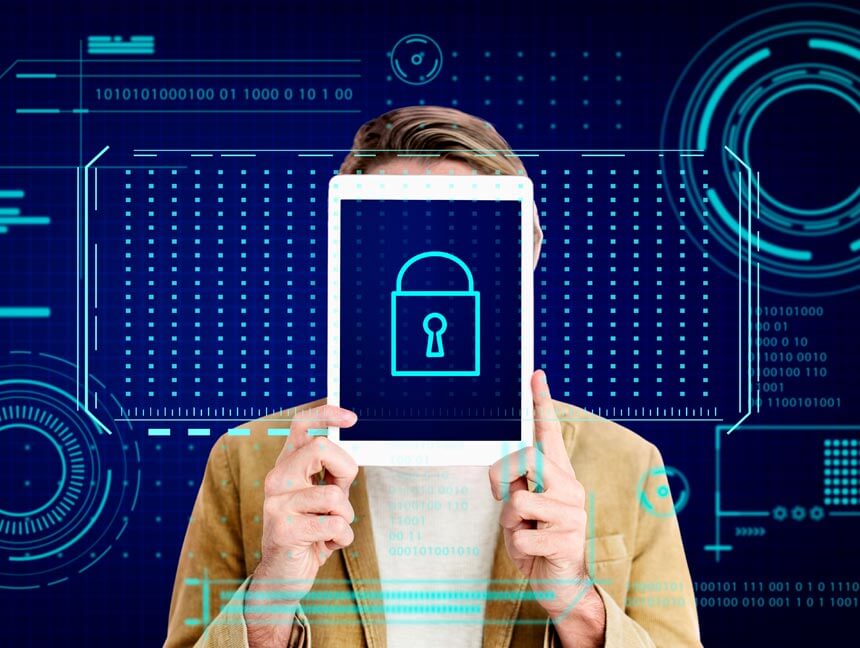Implementing **blockchain** in **cybersecurity** can offer a range of advantages, including enhanced data integrity, transparency, and decentralized trust. Blockchain’s distributed ledger technology (DLT) provides a secure and tamper-proof environment that can help address many of the challenges faced in modern cybersecurity, such as data breaches, fraud, and identity theft.
Here are several **ways to implement blockchain in cybersecurity**:
### 1. **Improved Data Integrity and Transparency**
– **How it works**: Blockchain’s key feature is that data stored on it is immutable, meaning it cannot be altered or deleted once recorded. This ensures that records are trustworthy and auditable, which is particularly useful for preventing data tampering.
– **Implementation**:
– **Data Validation**: Use blockchain to create a secure and auditable trail of data transactions. Each piece of sensitive information (e.g., financial transactions, user logins) can be validated via blockchain to ensure it has not been altered.
– **Event Logging**: Implement blockchain for logging events related to system access or transactions (e.g., database changes, user authentication). These logs can be made tamper-resistant, ensuring that an attacker cannot alter logs to cover their tracks.
**Benefits**:
– Provides a verifiable and immutable record of all activities.
– Enhances trust and transparency in data handling.
### 2. **Decentralized Identity Management**
– **How it works**: Blockchain can be used to manage digital identities in a decentralized manner, reducing reliance on centralized identity providers that are often targets for hackers.
– **Implementation**:
– **Self-Sovereign Identity**: Individuals can have control over their own identities, with blockchain enabling them to verify their credentials without relying on a third party. For example, users could authenticate themselves via a private key, eliminating the need for passwords or other easily compromised identity systems.
– **Zero-Knowledge Proofs (ZKPs)**: Use blockchain-based ZKPs to authenticate users without exposing sensitive data. ZKPs allow one party to prove to another party that they know a piece of information (e.g., a password) without actually revealing it.
**Benefits**:
– Protects against identity theft by giving users control over their personal data.
– Eliminates reliance on a central authority, reducing a common attack vector.
### 3. **Blockchain for Secure Communication**
– **How it works**: Blockchain can facilitate secure and transparent communication between multiple parties by using encryption and decentralized validation mechanisms. This can enhance data confidentiality during transmission.
– **Implementation**:
– **Encrypted Messaging**: Implement a blockchain-powered messaging system that allows end-to-end encryption and ensures that messages cannot be tampered with or intercepted. With the blockchain’s distributed nature, even if some nodes in the network are compromised, the integrity of the message remains intact.
– **Blockchain for VPN and Secure Communication Channels**: Use blockchain to secure and authenticate virtual private networks (VPNs), making it more difficult for attackers to compromise VPN servers.
**Benefits**:
– Ensures secure communication without intermediaries, reducing the risk of eavesdropping or man-in-the-middle attacks.
– Increases accountability, as each message can be traced back to a secure and verified source.
### 4. **Smart Contracts for Automating Security Processes**
– **How it works**: Smart contracts are self-executing contracts with the terms directly written into code. They can automatically execute certain actions when predefined conditions are met, ensuring that security protocols are followed without human intervention.
– **Implementation**:
– **Automated Access Control**: Use smart contracts to automatically enforce access controls based on user attributes (e.g., granting access to files when specific conditions are met, such as identity verification or permission checks).
– **Automated Incident Response**: Implement smart contracts to trigger automatic security responses to specific events, such as locking a user account after a certain number of failed login attempts or initiating a containment protocol after detecting unusual network activity.
**Benefits**:
– Enhances automation in incident response, making security processes faster and more reliable.
– Reduces human error in enforcing security protocols.
### 5. **Blockchain for Securing IoT Devices**
– **How it works**: The Internet of Things (IoT) has a large number of connected devices that can be vulnerable to cyberattacks. Blockchain can be used to secure communication and control across these devices by providing a decentralized framework for identity management and data integrity.
– **Implementation**:
– **Decentralized IoT Networks**: Use blockchain to create secure, decentralized networks for IoT devices, where each device has a unique identity and is authenticated on the network. This prevents unauthorized devices from connecting and potentially spreading malware or compromising sensitive data.
– **Data Provenance**: Blockchain can track the provenance of data from IoT devices, ensuring that the data is authentic and unaltered. This is particularly useful in scenarios where IoT data is critical, such as in healthcare or autonomous vehicles.
**Benefits**:
– Provides better security for the massive number of IoT devices that need to be managed.
– Ensures the integrity and authenticity of data collected by IoT devices.
### 6. **Decentralized Storage for Secure Data**
– **How it works**: Blockchain can be used to create decentralized storage systems where files are encrypted and split into small pieces, which are then distributed across a network of nodes. This reduces the risk of data breaches, as there is no central location for hackers to target.
– **Implementation**:
– **Decentralized File Systems**: Implement blockchain-based decentralized storage solutions like **Filecoin** or **Storj** to store encrypted data in multiple locations. This ensures that even if one node is compromised, the data remains secure across the rest of the network.
– **Data Access Control**: Use blockchain to manage who can access stored data, ensuring that only authorized users can retrieve the full file or specific portions of the data.
**Benefits**:
– Reduces reliance on central data servers, which are prime targets for cybercriminals.
– Increases redundancy and resilience of stored data, ensuring availability even in the event of system failures or attacks.
### 7. **Blockchain for Threat Intelligence Sharing**
– **How it works**: Blockchain can be used to create a decentralized platform for threat intelligence sharing between organizations and industries, allowing secure and transparent exchanges of data on cybersecurity threats.
– **Implementation**:
– **Threat Intelligence Platforms**: Use blockchain to create trusted, decentralized repositories for cybersecurity threat intelligence, where organizations can share information about malware, phishing attempts, or attack patterns. The immutable nature of blockchain ensures the data shared is reliable and not tampered with.
– **Automatic Alerts**: Implement smart contracts that automatically trigger security alerts or responses when certain threat intelligence data is shared or recognized in the blockchain network.
**Benefits**:
– Encourages collaboration and real-time sharing of threat intelligence without relying on a centralized authority.
– Ensures that the shared threat data cannot be altered or forged.
### 8. **Blockchain for Secure Voting Systems**
– **How it works**: Blockchain’s immutability and transparency make it an ideal solution for secure, tamper-proof digital voting systems, reducing the risk of election fraud or vote manipulation.
– **Implementation**:
– **Voting Platforms**: Develop blockchain-based voting platforms where votes are recorded in an immutable ledger, ensuring they cannot be changed once cast. The system could be transparent enough to verify voter eligibility without compromising anonymity.
– **Auditability**: The blockchain ledger provides a transparent record of all votes, making it easier to audit elections and ensure integrity.
**Benefits**:
– Provides a transparent and tamper-resistant record of votes.
– Reduces the risk of fraud and enhances trust in the voting process.
—
### Conclusion
Blockchain can significantly enhance cybersecurity by providing a secure, immutable, and decentralized way of handling sensitive information. From securing data integrity and authentication to automating security processes and protecting IoT devices, blockchain can address some of the most pressing challenges in modern cybersecurity. However, implementing blockchain requires careful consideration of scalability, privacy, and regulatory compliance. Organizations looking to integrate blockchain into their cybersecurity strategy should evaluate their specific needs and ensure they work with experienced blockchain developers and cybersecurity professionals.




